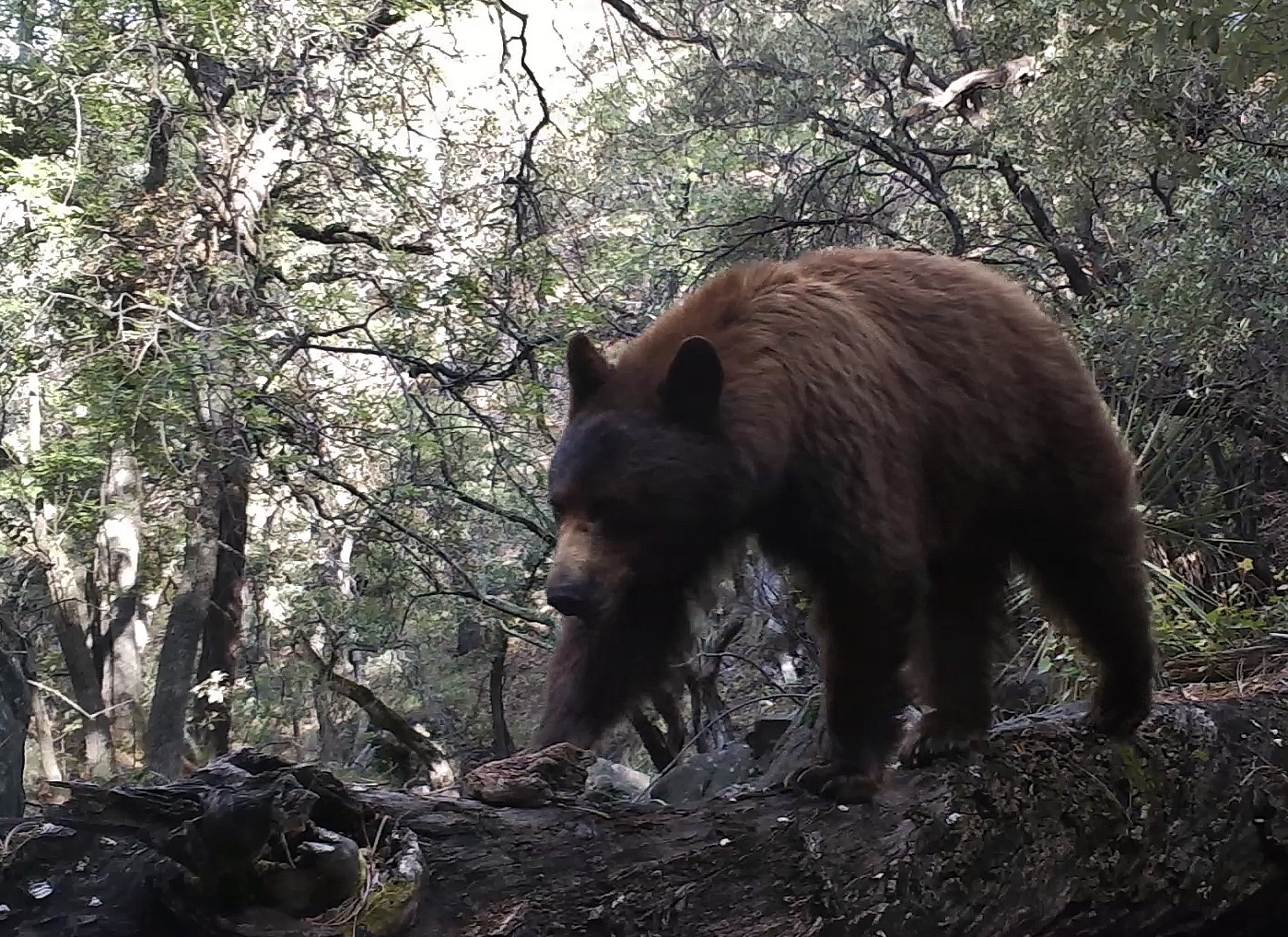Coatis, Ringtails, and Bears, Oh My!

As you may have guessed, if you follow this blog, I have been traveling out West quite frequently for the past year since the publication of my first book. The reason is that I’m planning to write a western edition of Camera Trapping Guide. One area of focus has been southeastern Arizona, an area of unusually high biodiversity due to its location at the intersection of four biomes: the Rocky Mountains, the Sierra Madres, the Chihuahuan Desert, and the Sonoran Desert. The mountains in this region are called “Sky Islands” because they rise abruptly and dramatically from desert. As you go up in elevation, the habitat changes from hot, dry desert and grassland to cooler, moister forests – first evergreen oak, then pine, and eventually spruce-fir. The Sky Islands are home to more than half of all bird species, as well as the greatest number of mammals, in the US. So it was to the Sky Islands that I headed to track and camera trap the likes of coati, ringtail, javelina and prairie dog, with faint hope of getting ocelot and jaguar, two spotted felines which occasionally appear in this region as isolated individuals (i.e., no evidence of breeding populations).
In attempting to get the spotted felines, I placed some of the trail cameras in spots that are likely to attract cats. One such spot is a log bridge. Some cat species love log walking even if the log does not the provide a short cut over water, ice, or difficult terrain. For example, I’ve seen bobcat tracks along the length of a 3 inch diameter log in about an inch of snow on level forest floor. To be honest, I have no idea if ocelots or jaguars like log walking as much as bobcats do, but I figured I’d give it a shot. So, the following video is a compilation of some of the clips captured by a camera stationed at one end of a large log spanning a stream bed. Not a single cat of any species used it, not even a bobcat, but it appeared to be a highway for coatis and squirrels, an occasional travel route for ringtails, and a summer run for bears. Enjoy the video.
Related Posts
Choosing a Good Bridge for a Trail Camera
Wildlife in an Arizona Canyon
White-nosed Coati
Sources
Skroch, M. Sky Islands of North America

Logs are always productive as can be seen on this post on my blog https://forestandfield.blogspot.com/2019/08/running-log-crossing-log.html. There are two more log posts in the works.
Those are nice videos you have from the sky island.
Indeed, they are excellent trail cam targets. I’ll check out our post. Thanks!
Hi Janet! Thanks for keeping your blog alive and always remaining vigilant about responding to comments with a clear and rational perspective. I just wanted to add that my understanding of the term “sky island” references how unique the ecology each individual desert mountain area is into itself, as their are species endemic to each that may not migrate across the desert to another. It is such a phenomenal experience to visit a sky island rising up from the desert plains and encounter the forest ecology such as your have described. All the best to you and yours!
Yes that is true for some less mobile or smaller species that don’t travel far, so that there are different subspecies or species in different ranges. Birds and larger, farther ranging mammals often can travel between them. But the original definition of sky islands referred to the isolated groups of mtns specifically in AZ and NM that are near the MX border. They are especially unique and diverse because they are where 4 distinct biomes meet. The term is now taking on a more generalized meaning that refers to any isolated mtn ranges that jut up from very different lowland habitats.